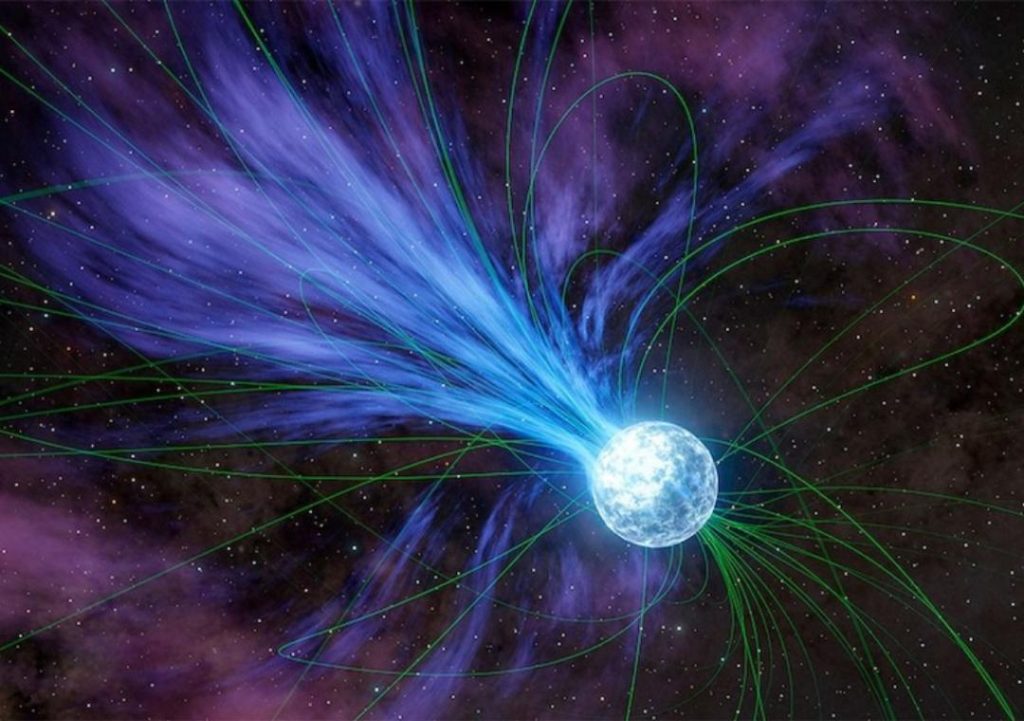
Gold & Platinum Created Through Neutron Stars’ Explosions: Study
For centuries, humans have been fascinated by the origins of precious metals like gold and platinum. Where did they come from? Were they created by the gods, or did they have a more earthly explanation? While we may not have all the answers to these questions, a recent study has shed new light on the creation of these valuable elements.
According to a study led by Columbia University student Anirudh Patel, magnetars, or highly magnetized neutron stars, played a crucial role in the creation of gold and platinum. These stars, which are the result of massive stars that have undergone supernovae explosions, are capable of releasing flares that contain these precious elements.
The study, which was published in The Astrophysical Journal, suggests that magnetars are responsible for creating elements like gold and platinum through a process known as rapid neutron capture, or r-process nucleosynthesis. This process occurs when a massive star undergoes a supernova explosion, causing a rapid increase in temperature and density within the star’s core.
As the star’s core collapses, it creates a massive amount of neutron-rich material, which is then expelled into space. This material, which is rich in neutrons, is perfect for creating heavy elements like gold and platinum through r-process nucleosynthesis.
The study used data from NASA’s Swift Gamma-Ray Burst Mission to analyze the light curves of magnetars that had undergone supernovae explosions. By studying the light curves, the researchers were able to determine the timing and intensity of the flares emitted by the magnetars, which provided valuable insights into the creation of gold and platinum.
The results of the study suggest that magnetars are responsible for creating gold and platinum through r-process nucleosynthesis. The researchers also found that the explosions occur approximately once per decade in the Milky Way galaxy, and annually across the observable universe.
So, where did the precious metal gold come from? According to NASA, the answer lies in the explosions of magnetars. These explosions, which occur when a massive star undergoes a supernovae explosion, create the perfect conditions for the creation of heavy elements like gold and platinum.
Gold, which is one of the most valuable and coveted metals on Earth, is created through the r-process nucleosynthesis process. This process occurs when a massive star undergoes a supernovae explosion, causing a rapid increase in temperature and density within the star’s core.
As the star’s core collapses, it creates a massive amount of neutron-rich material, which is then expelled into space. This material, which is rich in neutrons, is perfect for creating heavy elements like gold through r-process nucleosynthesis.
The study’s findings have significant implications for our understanding of the origins of precious metals like gold and platinum. For centuries, humans have been fascinated by the mysteries of these metals, and the study has provided valuable insights into their creation.
The study’s lead author, Anirudh Patel, stated that the findings suggest that magnetars are responsible for creating gold and platinum through r-process nucleosynthesis. “Our study provides strong evidence that magnetars are the source of many heavy elements, including gold and platinum,” he said.
The study’s findings have also sparked new interest in the search for magnetars. These stars are incredibly rare, and their discovery requires the use of highly sensitive telescopes and advanced detectors.
The search for magnetars is an exciting area of research, and the study’s findings have provided valuable insights into the creation of precious metals like gold and platinum. As scientists continue to study these stars, they may uncover new secrets about the origins of our universe and the creation of the heavy elements that make up our world.






